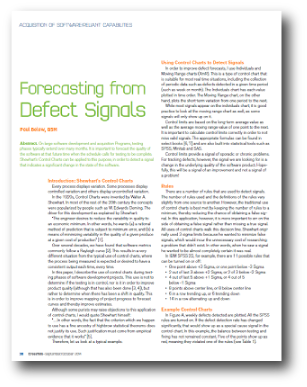
On large software development and acquisition programs, testing phases typically extend over many months. It is important to forecast the quality of the software at that future time when the schedule calls for testing to be complete. In this article, originally published in CrossTalk, Paul Below shows how Walter Shewhart’s Control Charts can be applied to this purpose, in order to detect a signal that indicates a significant change in the state of the software. This signal detection is then used to improve mapping of project progress to forecast curves and thereby improve estimates of project schedule.
This is Paul's second article for CrossTalk. He has over 30 years of experience in technology measurement, statistical analysis, estimating, Six Sigma, and data mining. He is a Principal Consultant with QSM where he provides clients with statistical analysis of operational performance, process improvement and predictability. He is co-author of the IFPUG Guide to IT and Software Measurement (CRC Press, 2012). He has developed courses and been an instructor for estimating, Lean Six Sigma, metrics analysis, function point analysis, and also taught metrics for two years in the Masters of Software Engineering Program at Seattle University. He has presented papers at a dozen industry conferences.
